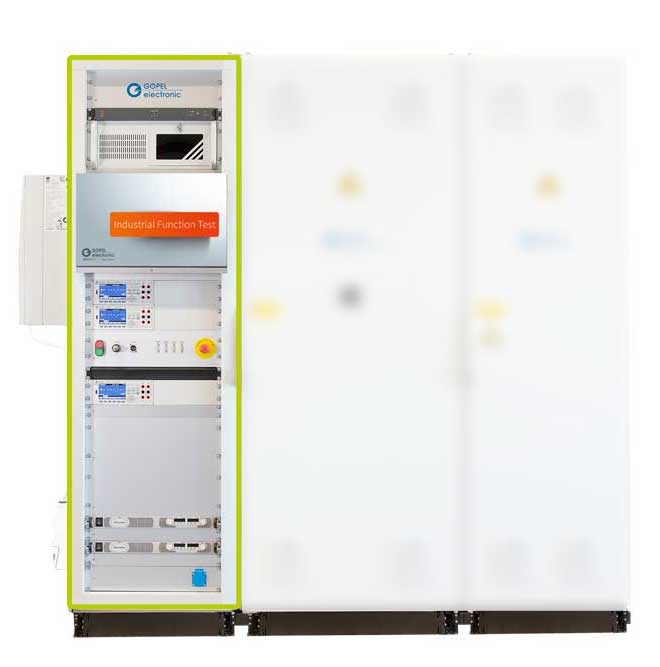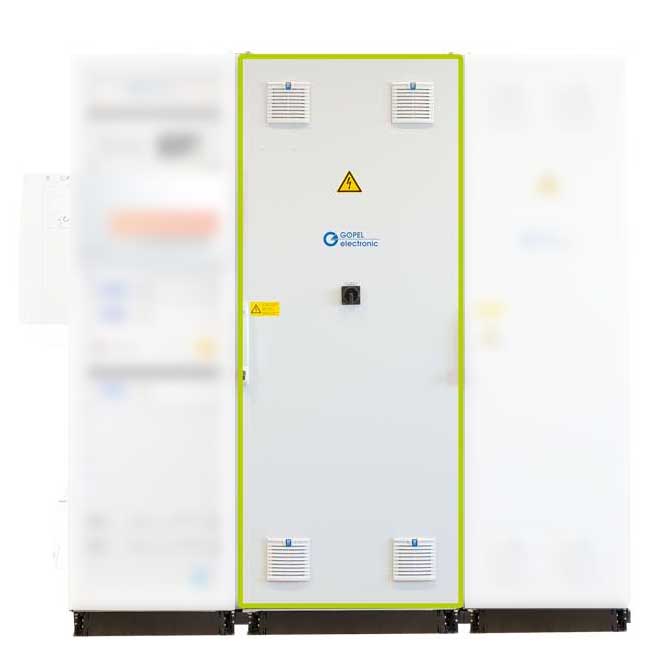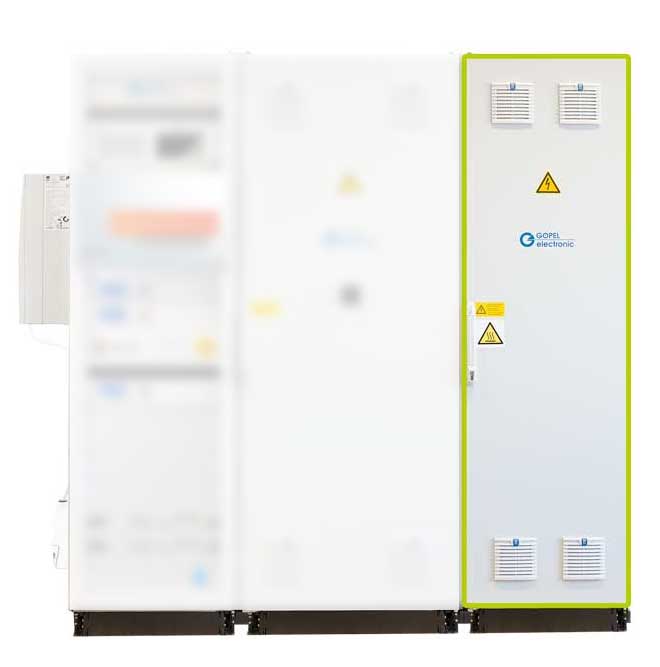Battery Test for Electric Cars
The Battery - the heart of the electric car
The battery (or storage) is the heart of electric or hybrid cars and provides the energy for its movement. We put the battery through rigorous testing (end-of-line) before it is installed in the vehicle.
High-Voltage Batteries
Those batteries are mostly high-voltage batteries with output voltages between 400V DC and 800V DC. They consist of a large number of Lithium-ion cells connected in parrallel and in series. Depending on the required output, several cells are joined together as a single "Battery Pack". Battery Packs are housed in a crash-protected aluminium or in steel casings. Another important component is the power electronics, which control the battery's functions. Cells, electronics, communication and high-voltage connections, as well as cabling, are permanently installed in the battery management system module.
![[Translate to Englisch:] Batteriemanagementsystem [Translate to Englisch:] Batteriemanagementsystem BMS](/fileadmin/images/ats/emobility/battery.gif)
Safety Tests of the Battery Module
The Function Test System from GÖPEL electronic checks the entire module for functionality before it is installed in the body as the final step.
Before performing a function test, the complete battery module is subjected to a safety test. The actual function test is not carried out until this safety test has been passed. The function test checkes whether the communication interface functions correctly. For this purpose, the battery module is supplied with the traditional on-board voltage of an electric vehicle. With the help of the CAN bus, the HV voltage is switched to the battery and checks its status via the Battery Management System (BMS). With a potent power supply in th eHV range, which can be operated either as a source or drain, the battery is charged with a prescribed and defined charging pulse, drained and finally the "State-of-Charge" is checked. The energy required for this is fed back into the power grid by the test system after the battery has been drained.
In a further function test, safety related signs of the battery module are tested by simulations, for example, whether the battery switches off in the case a crash sign is given. In addition, it is checked whether the individual cells can be read out via the control unit and whether the Battery Management System (BMS) is functional. Finally, the entire test results are written in a database in the production department. If the test is successful, release data is written to an EEPROM memory of the battery module, via the CAN bus, indicating its flawless functionality.

• system computer with Monitor
• USV for System computer
• DMM‘s for voltage measurement
• power Supply for Kl30 und Kl30C
• current measurement for Kl30 und Kl30C
• all components air-conditioned
 Demande
Demande



